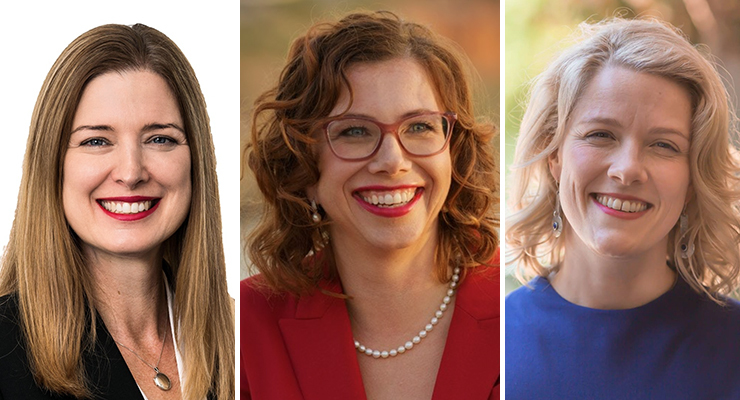
Prime Minister Anthony Albanese’s first cabinet has a record number of women: 10 in his 23-member cabinet, and 13 across the 30-member ministry.
Women make up 43% both of ministers and cabinet, and Albanese says the party is working towards 50-50 representation.
It’s broken Scott Morrison’s previous record of seven women in cabinet and nine in the ministry. In 2001, the number of women in cabinet was just 6% and under the last Labor government in 2007 sat at 22% under Kevin Rudd.
Here’s how gender representation has tracked over time.
Labor’s last win
When Labor was last voted in, Rudd appointed just four women to his 21-member cabinet, and another three in the outer ministry, with 20% representation. Julia Gillard didn’t do much to shake things up in 2010, largely keeping the ministry the same after ousting Rudd.
Her second ministry decreased in size and Justine Elliot was lost to the fray — there were six women in the 29-member ministry in 2010.
Upon his reappointment, Rudd brought in a few new faces — Jacinta Collins, Julie Collins, Catherine King, Kate Lundy, Jan McLucas, Sharon Bird and Melissa Parke. With six women in cabinet he broke the record of women representation, bringing it to 30% in cabinet and 36% across the ministry.
Abbott’s witch-hunt
After a shocking sexist campaign against Gillard, Abbott and his budgie smugglers made it to government, bringing cabinet representation down to the lowest levels since the turn of the century.
Just one woman, Julie Bishop, was appointed to his cabinet. Another four were placed in the outer ministry — Fiona Nash, Sussan Ley, Marise Payne and Michaelia Cash achieving gender representation of just 5.3% in cabinet and 16.7% across the ministry. That’s the same proportion of women in cabinet as in 1949 under Robert Menzies.
Turnbull added a single woman — Kelly O’Dwyer — when prime minister in 2015, though representation dropped back down to Abbott levels in 2016 after Ley resigned from her portfolios after an expenses scandal.
Morrison makes a move
In Morrison’s first 30-member ministry in 2018, there were seven women, with Linda Reynolds, Karen Andrews and Melissa Price entering. After his 2019 reelection, Morrison broke records for female representation in cabinet with nine women — making up 30.4% of all members as Anne Ruston and Bridget McKenzie scored spots and Sussan Ley reappeared from exile.
But although Morison’s cabinet broke records (beating Rudd by 0.4%) no women held key domestic portfolios and just a quarter of Liberal MPs across state and federal parliaments were female while he was in power.
It pales in comparison with our new government, the closest to score gender parity and one of the most representative in history.








Morrison also broke records for the levels of incompetence and corruption in the cabinet and the ministry, and gender was irrelevant in respect of the star performers of incompetence and corruption.
So representative and healthy – for the ALP, our parliament and national discussion. Women have spoken. Brittany Higgins and Grace Tame have been gutsy, courageous young women to push this issue to national prominence.
How great that professional women are a larger employment sector than Tradies. Penny Wong and Tanya Plibersek have proven it is possible for a female to be a strong politician without losing compassion or warmth towards others. Hopefully, the younger female politicians can follow their example; the place could be so much better as a result.
Interesting that it was reported that after the Left and Right Labor factions were given 50% each of the ministries the Right faction had to be forced by Albo to a position of gender equity. Does Shorten still run the Right faction, or is it Tony Burke? I wonder which of the good ole boys missed out.